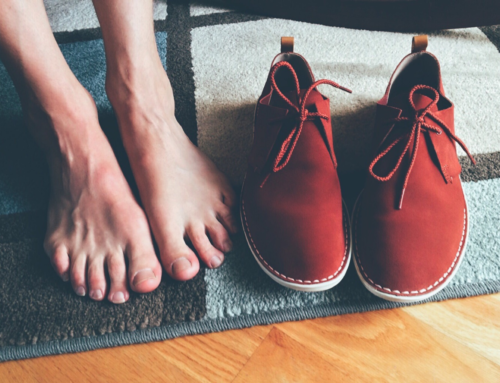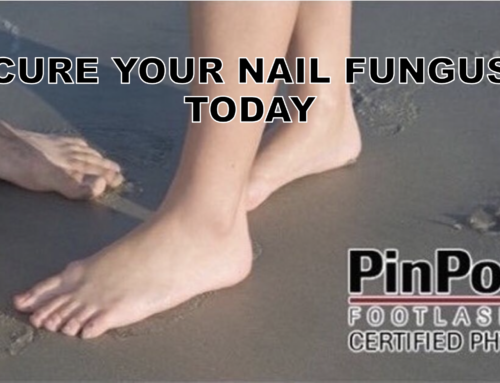Is a toenail fungus home remedy worth it? Toenail fungus can be gross and ugly, so you’ll want to get rid of it right away. Some people resort to home remedies instead of going to the local podiatrist to have it checked out. But how effective are home remedies for toenail fungus?
Common Home Remedies:
- Snakeroot extract
- Olive leaf extract
- Garlic
- Tea tree oil
- Cornmeal soak
These remedies have therapeutic benefits that include antiseptic and antifungal properties. You can generally use them topically, but you must dilute them. They can cause allergic reactions, skin irritations, or inflammation. In order to see results with these treatments, one must be consistent, and it would depend on how the body responds to them. Moreover, scientific studies about the use of these ingredients for home remedies to treat toenail fungus have mixed results.
Simple At-Home Cornmeal Treatment for Toenail Fungus
Begin this treatment by making a cornmeal soak. Use a small container, but big enough for your foot to fit, and place about an inch of cornmeal. Proceed by adding about an inch of lukewarm water to the cornmeal and allowing it to sit for about an hour, allowing the concoction to form. You may then put the feet in the mixture, adding more warm water, enough to cover the feet.
Allow the feet to soak for an hour, making sure the entire foot is covered in the mixture, not just the toes, since the fungal spores may be present on other parts of the foot that are not visible to the naked eye. Finally, you may wash off the cornmeal-water mixture from the feet and pat the feet and toes dry with a towel. You may repeat this process once per week until you notice improvement and clearing.
As mentioned above, this may not work for everyone, nor is it a medically tested treatment option. You may, however, notice great results as well, so it never hurts to try!
Home Remedies vs. Nail Fungus
Nail fungus home remedies will in no way completely get rid of your nail fungus. If you see any kind of improvement at all, you are likely just imagining it. At best, toenail fungus home remedies will just help you keep your nail fungus from spreading further. At worst, some of the toenail fungus home remedies you might try could actually harm you. Bleach is one you’ll want to avoid for sure.
When people try to treat toenail fungus with home remedies, they usually either end up doing one of two things. They either give up trying to find a solution to their nail fungus infection or they try another option. Luckily for you, there are lots of other nail fungus treatments on the market. Some of them work better than others. All of them work better than nail fungus home remedies. Other nail fungus treatment options include potentially harmful medications, as well as laser nail fungus treatment. If you don’t want to waste your time with a nail fungus home remedy, seek out one of these options instead. A podiatrist will be able to help you decide what kind of nail fungus treatment option would be the best one for you to use.

Chemical Burns from Home “Remedy”
Chemical burns from a home “remedy” can be very dangerous. Chemical burns develop when strong chemicals are used incorrectly and come into contact with the skin. These burns develop when dangerous chemicals aren’t used correctly. Some people may even attempt to use these chemicals themselves to treat another medical condition, like toenail fungus.
Why do you get chemical burns?
The use of chemicals like these for anything other than cleaning is why chemical burns form. DIY treatments for toenail fungus are normally ineffective. They lack proper research and chemicals for eliminating the actual fungus. These at-home treatments are not effective. Many of them can actually be very dangerous and cause harm to the toe and nail.
Using bleach to treat toenail fungus is discouraged widely by medical professionals. It is much more likely to cause harm than to do any good for the toenail’s condition.
Chemical burns from using bleach to treat toenail fungus occur because of the chemical makeup of bleach itself. It is necessary for bleach to be this harsh a chemical. It is able to fulfill its job as a cleaning agent, dissolving dirt and grime on surfaces.
What to do with a chemical burn
The chemical burns developed vary in severity depending on the length of time the bleach is applied. However, the more time that the bleach is in contact with the skin, the worse the chemical burns will be. If you attempt to put bleach on your skin for any reason, you must remove it immediately.
The first step in getting the bleach off of your skin is to rinse for 5-10 minutes at least. Also, remove any clothing that you have on that came into contact with the chemical. After this rinse, use soap and water to gently scrub away any remnants of bleach.
Types of Chemical Burns
To assess the damage done in chemical burns, examine how the skin looks where you put the bleach. Chemical burns normally require immediate medical attention. You can apply cool compresses and ointments to the burn to see if that helps with the symptoms.
However, if the burns don’t get better quickly, you will need to seek medical attention as soon as possible.
Other Remedies for Toenail Fungus
Chemical burns from home “remedies” are dangerous. Toenail fungus infections are best treated by a licensed podiatrist. They are doctors who specialize in treating issues of the feet specifically. Many treatments available for toenail fungus aren’t very effective. Some of them can even have a serious risk of harmful side effects.
The PinPointe Laser is an FDA-approved treatment for the fungus that only requires one session to eliminate the fungus. To learn more about the PinPointe laser technology and schedule a free consultation with one of our podiatrists, visit our website here.
Talk to a Podiatrist
Is a toenail fungus home remedy worth it? Home remedies are not guaranteed to be effective. There are better ways to treat toenail fungus that a Podiatrist can recommend.
Why you should consult your local Podiatrist
Podiatrists are doctors who specialize in feet. They are trained to diagnose and treat a wide variety of conditions relating to the foot, including toenail fungus.
Consultation with the podiatrist will start with your medical and foot history, and diagnosis of nail fungus. The doctor will then explain the causes, signs, and symptoms, followed by treatment options.
Other Treatments for Toenail Fungus
One of the best options to treat nail fungus is a laser treatment that can cure nail fungus in one treatment. After completing the treatment, the doctor advises you on proper foot care and ways to prevent the fungus from reinfecting your nail. This is a much better and more reliable way to treat nail fungus than any home remedy.
Laser Treatment for Nail Fungus
As you can see, tips for healthy feet without nail fungus can be easy to find. If you have caught nail fungus, it can be easily treated using the FDA-approved PinPointe laser. It typically only takes one treatment. Other treatments, like topical solutions and oral medication, are not as effective. Topical solutions have a very low cure rate. This is because the solution does not penetrate all the way through the nail bed. This is because it can lead to liver toxicity. You would need to have consistent blood tests throughout the course of taking the medication.
Our nail doctor in Orlando, FL, recommends this treatment for toenail fungus. The PinPointe Laser treatment has the highest cure rate in the market. It has no side effects and no recovery period. As a result, you can go about your daily activities right after the treatment. Also, there’s no pain. If you have any signs of nail fungus, call us at (800) 672-0625 at our Orlando, FL location. Visit our website for more information on our doctors at one of our over 150 locations.




